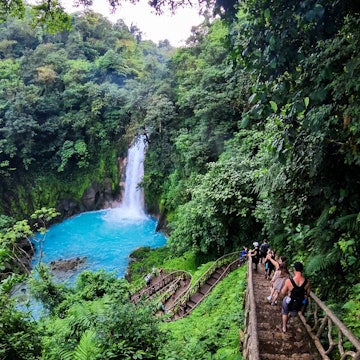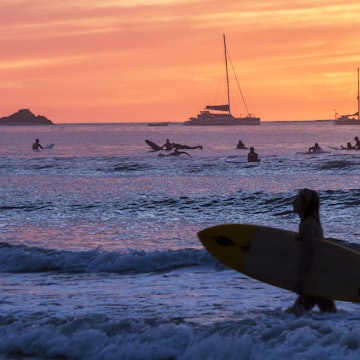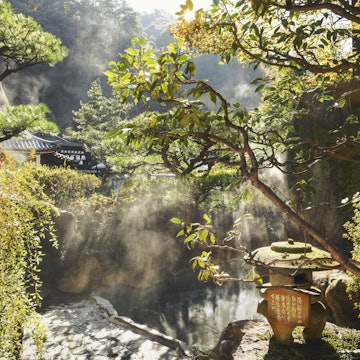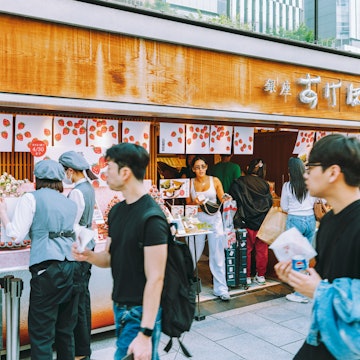
Inside the world’s “Blue Zones,” where people live longer lives

Sep 14, 2023 • 6 min read

Growing (very) old is fun indeed in the world’s five Blue Zones © courtesy of Netflix
In these destinations, the focus of a new Netflix series, wellness isn’t a conscious goal, but an ancient way of life.
As the modern wellness trend continues its march, more travelers are incorporating health-focused activities, from yoga retreats to vegan food tours, into their trips. Yet there are a handful of destinations around the world where wellness isn’t a conscious goal, but an ancient way of life, and whose inhabitants live remarkably long and happy lives.
They’re called Blue Zones. And they’re the subject of a popular new docuseries on Netflix, Live to 100: Secrets of the Blue Zones, hosted by author, educator and National Geographic Fellow Dan Buettner.

What is a Blue Zone?
Buettner has extensively studied the world’s Blue Zones – there are only five in the world – and drawn some simple if surprising conclusions about these far-flung areas.
“I have found that most of what people think leads to a long, healthy life is misguided or just plain wrong,” says Buettner in the series, dismissing the fitness obsessions and health crazes we’re all too familiar with. “The fact of the matter is that most of us are leaving good years on the table.”
What’s the secret to the Blue Zones?
The answer varies, though residents in all five Blue Zones share several characteristics. Their community members tend to live an active lifestyle, surrounded by friends and family. In general, they are religiously observant, or adhere to a shared belief system. Their diet tends to be plant-based – with a glass of wine or two to unwind.
Yet each has unique characteristics that you need to experience in person (or at least via Netflix) to fully understand. Here is a short introduction to the world’s five Blue Zones.

Okinawa, Japan
With an aging population and millions of people living alone, Japan is experiencing a loneliness epidemic, which is linked to higher rates of depression, dementia and heart disease. But on the island chain of Okinawa, tight-knit communities are bucking the trend – and living ever longer as a result. More people here reach the age of 100 than almost anywhere else on earth.
What’s their secret?
Some put it down to moai, traditional social groups formed in childhood and continued throughout adulthood through regular meet-ups. These networks provide lifelong friendship, as well as practical, spiritual and financial support. Centenarians also credit ikigai, or a sense of purpose, as a driver of longevity. They achieve such purpose is achieved by, for example, growing their own vegetables such as sweet potato, goya (bitter melon) and kabocha squash, all known for their health benefits. Diet-wise, the mantra “hara hachi bu”– eat until you’re 80% full – may also be a factor.
You can learn about the art of endurance at a homestay in the rural Okinawan village of Ogimi, where you can witness the locals’ laid-back approach to timekeeping and hear the elders’ life stories. Sit down for lunch at Emi No Mise, famed for its longevity bento set, or go in search of the fountain of youth on a hike to one of the region’s many waterfalls.

Sardinia, Italy
For Sardinians, longevity is in the genes – the M26 genetic marker, to be precise. There are nearly 10 times more centenarians per capita here than in the US, but experts think that this comes down to more than just biology.
In the mountainous province of Nuoro, Sardinia’s traditional lifestyle prevails: people take gentle exercise every day; eat fresh, seasonal food including lots of whole grains and little meat; and consider older generations a valued part of society. Locals ascribe their long-lasting health in part to physical labor, while the strong island winds which keep the air they breathe clean. Then there’s the wine – the grape variety cannonau (a local grenache) has two to three times more artery-friendly flavonoids than other wines, and is usually taken in moderation with both lunch and dinner.
Want in? Immerse yourself in nature by volunteering on an organic farm through organizations such as WWOOF, where you will live alongside local people, eating home-cooked meals and spending your days working the land. If you’re short on time (after all, we won’t all live to 109) visit Sella & Mosca vineyard, or learn to make minestrone and other death-defying recipes at a cooking class. There’s even a Longevity Tour for would-be nonagenarians.
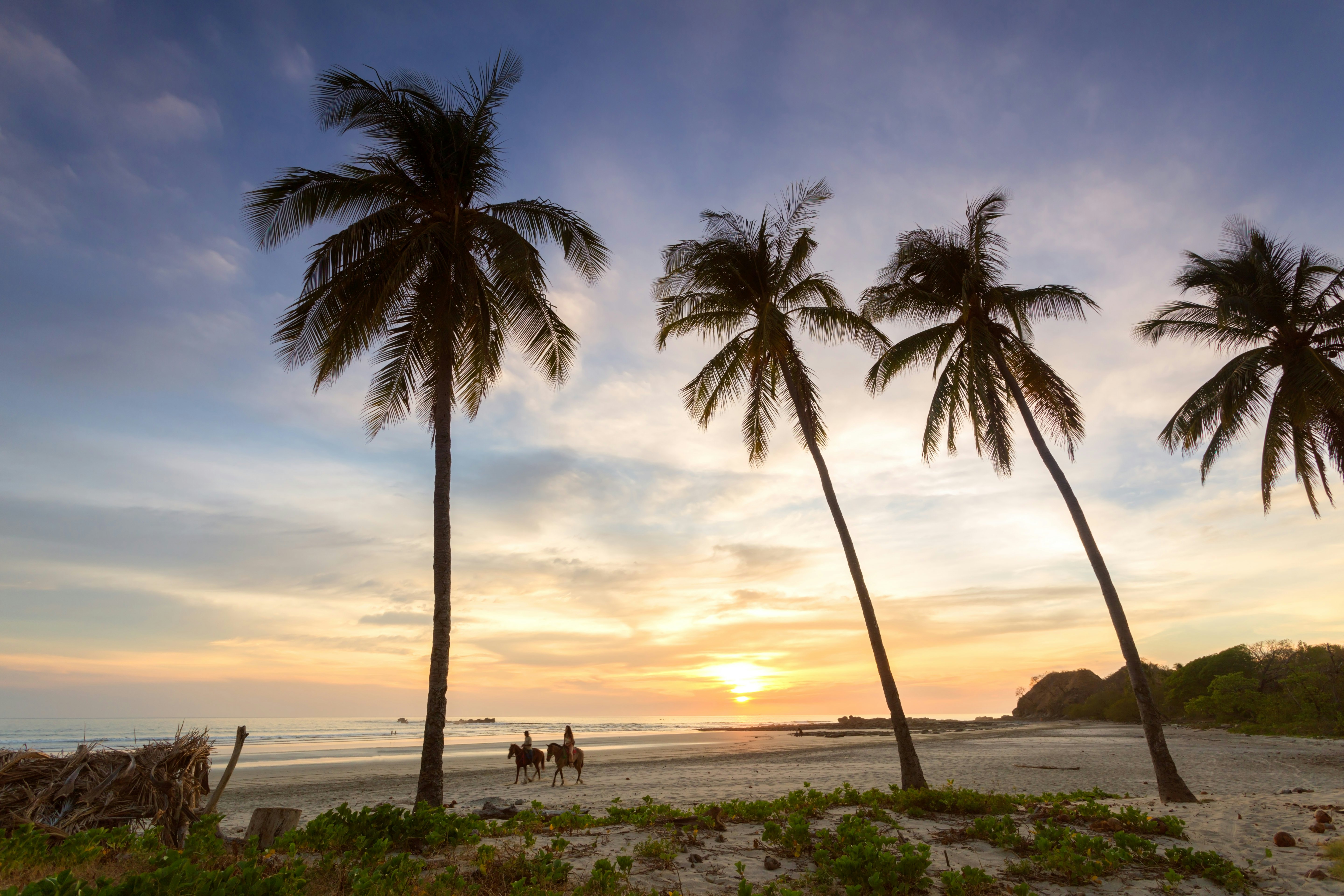
Nicoya, Costa Rica
Beans, beans, the magical fruit – the more you eat the more you…get out of life? It would appear so in Costa Rica’s Nicoya Peninsula, home to the longest-lived people in all of the Americas, and where the health-boosting triumvirate of squash, corn and beans known as las tres hermanas (the three sisters) grow in harmony to provide the perfect balance of carbs, protein and fibre. Corn is still prepared the traditional Mayan way: by soaking it in slaked lime or ash before grinding, which releases the corn’s niacin, reducing toxins and allowing the body to absorb more calcium, iron and minerals.
Having a sense of purpose (plan de vida), an optimistic outlook, strong family ties and regular exercise are all said to contribute to longevity here. Throw in a healthy dose of vitamin D (aka sunshine), nutrient-packed tropical fruits, calcium-rich water and widespread spirituality and it would appear you have the recipe for a long, happy and healthy life. Brave the crowds the week before Easter to witness locals’ faith in action at Semana Santa festivities, or de-stress on the beach in Santa Teresa or Montezuma. Learn to make your own corn tortillas at a homestay or cooking class – and don’t forget to eat your beans.

Ikaria, Greece
A third of the population of Ikaria makes it to their 90s. Dementia is practically non-existent. So what is it about this lesser-known Greek island that keeps people living longer?
Years of isolation may be a factor. Strong winds meant fewer sailors came ashore in centuries past, ensuring that traditional cultures were preserved and the people self-sufficient. Occupied by Germans and Italians during the Second World War and later used as a place of exile for communists, a culture of solidarity emerged, embedding strong social bonds. All this paired with a healthy Mediterranean diet – olive oil, red wine, homegrown organic vegetables, local honey (rather than refined sugar) and goat’s milk – and a relaxed pace of living has seen life spans stretch further.
Ikaria’s Blue Zone inclusion has drawn visitors from all over the world, and it’s easier than ever to get here – yet this rugged island remains unspoiled. Come to soak in the healing waters of spa town Therma, or rediscover your zest for life with a skinny dip on nudist-friendly Nas beach. Indulge in afternoon naps, drink wine linked to longevity (after all, Ikaria is known as the birthplace of Dionysos, God of wine) and join panigyria (traditional feast days) for local food, live music and dancing, where even the oldies are likely to stay up until the wee hours. One tip: leave your watch at home.

Loma Linda, California
Los Angeles might be known for SoulCycle, smoothie joints and Lululemon-clad joggers – but you’ll need to head east to find California’s healthiest people. In Loma Linda, a population of around 9000 Seventh-day Adventists are known to live around a decade longer than other US citizens, most likely due to their plant-based diets and religious practices. Churchgoing and Bible-study groups create dependable social circles, while observing the Sabbath allows time to unwind. Avoiding alcohol, taking regular exercise and eating plenty of fresh vegetables and whole grains keeps disease at bay, too.
Get a taste of the good, long life at Loma Linda farmers market (which sells no meat, poultry or seafood), or take a gentle hike in Hulda Crooks Park, named after longtime resident and mountaineer nicknamed Grandma Whitney, who scaled hundreds of peaks between the age of 65 and 91 and lived until the grand age of 101.





